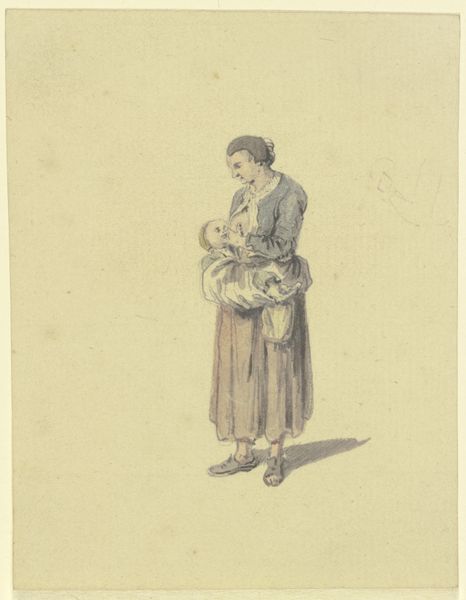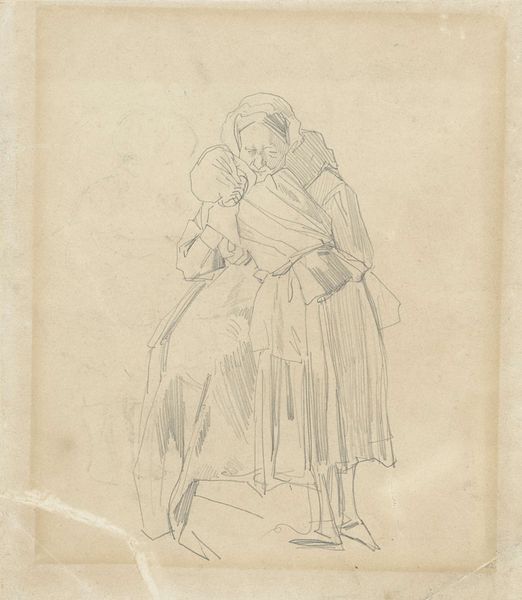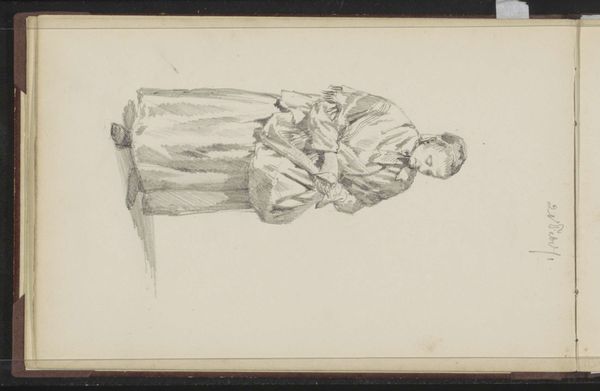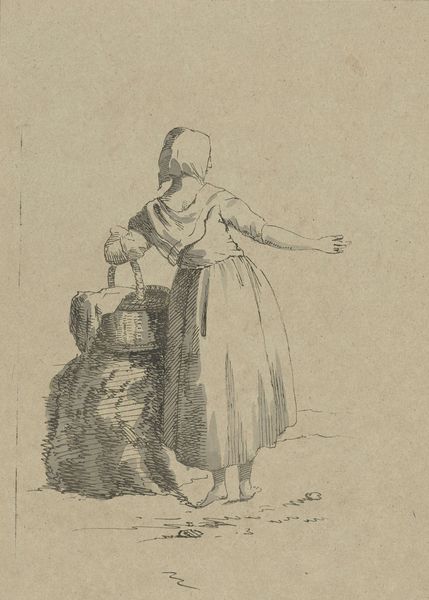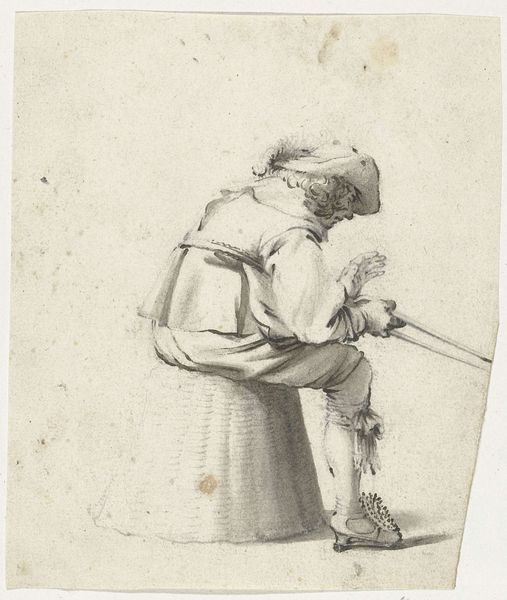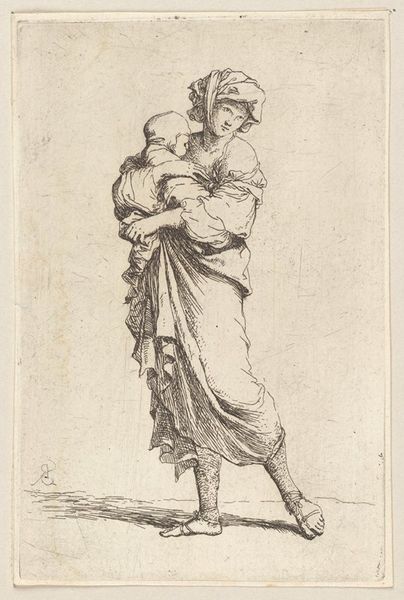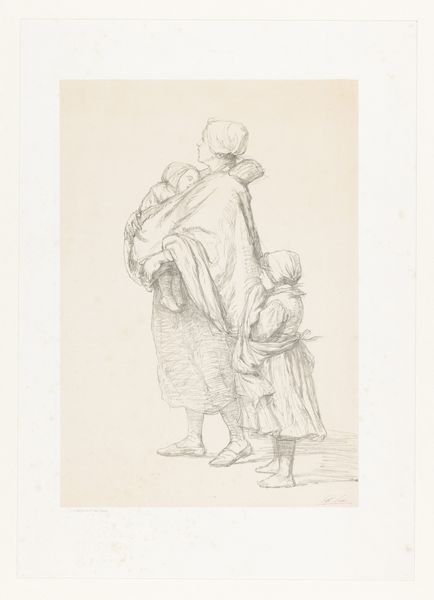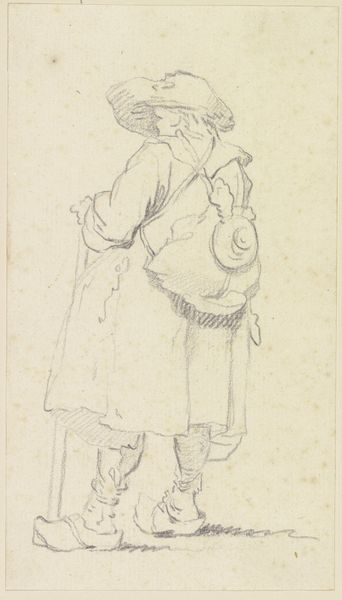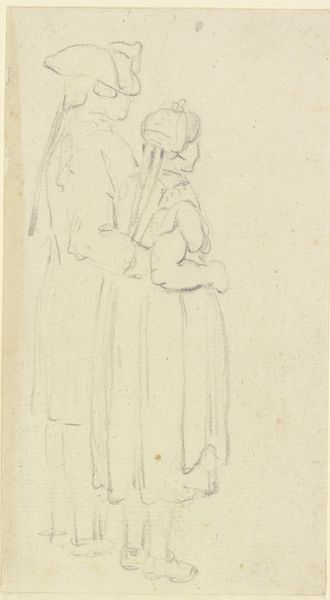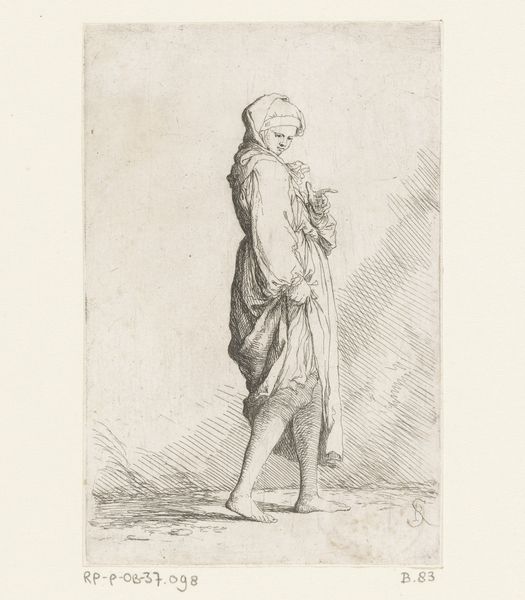
drawing, pencil
#
portrait
#
pencil drawn
#
drawing
#
amateur sketch
#
toned paper
#
light pencil work
#
pencil sketch
#
incomplete sketchy
#
figuration
#
personal sketchbook
#
pencil drawing
#
pencil
#
sketchbook drawing
#
sketchbook art
Copyright: Rijks Museum: Open Domain
Curator: Here we have a pencil drawing entitled "Boerin met een zak," which translates to "Farmer's Wife with a Sack," attributed to Balthasar Paul Ommeganck, likely created before 1817. Editor: It's delicate, almost ethereal. The woman's posture, turned slightly away, gives the piece a transient, observational quality, like a fleeting glimpse captured in time. Curator: Indeed. Ommeganck was known for his landscapes and animal paintings. A drawing like this offers a fascinating look into his process and perhaps a different side of his artistic interests. Peasant studies were not uncommon at the time. They romanticized the rural and the ordinary even as socio-economic realities were harsh. Editor: This drawing raises so many questions. What was the artist intending to express? I can see the work as perhaps a commentary on the lives of rural women, often overlooked in more elevated artistic circles, highlighting their labor. We should reflect on the kind of class structure this image implies. Curator: That’s a good point. The way she is depicted is interesting, though. While there's attention to detail in her clothing, particularly the folds and fabric, her face remains somewhat indistinct. What do you make of that? Editor: It's like her identity is subsumed by her role, 'a farmer's wife'. I wonder how conscious the artist was of the power dynamics at play. Were they observing from a place of privilege? Or were they trying to elevate the status of these women? Or something else completely? It's impossible to know fully. Curator: True, but her wooden shoes are telling. As is the burden in her hand. Also note the unfinished aspect; one wonders whether the drawing served as preparation for a painting, perhaps to integrate her within a pastoral scene with cattle, which was one of Ommeganck’s preferred subjects. Editor: Regardless of the initial intention, I find her anonymity deeply compelling. It encourages the viewer to reflect not just on this particular woman, but on the broader conditions shaping the lives of countless others like her. Curator: It also offers a different lens through which to appreciate Ommeganck, stepping away from the grand landscapes toward more human, personal subjects, reflecting social structures of the period. Editor: This quiet piece certainly gives us pause, making it relevant even today in dialogues about labor, gender, and class.
Comments
No comments
Be the first to comment and join the conversation on the ultimate creative platform.
